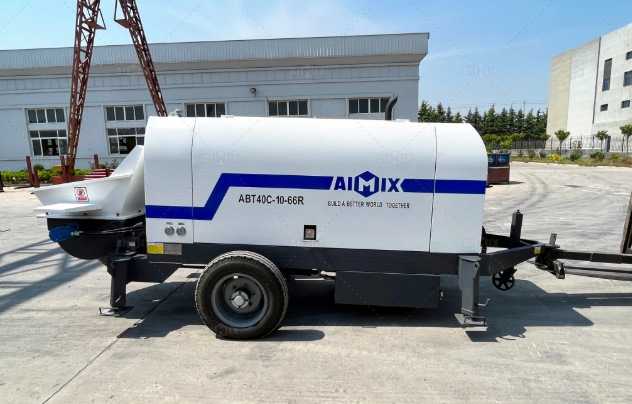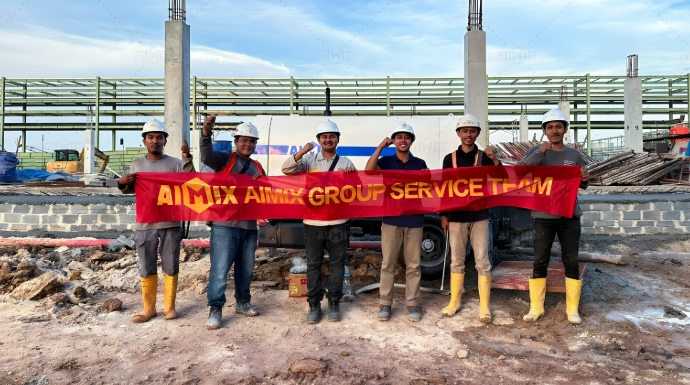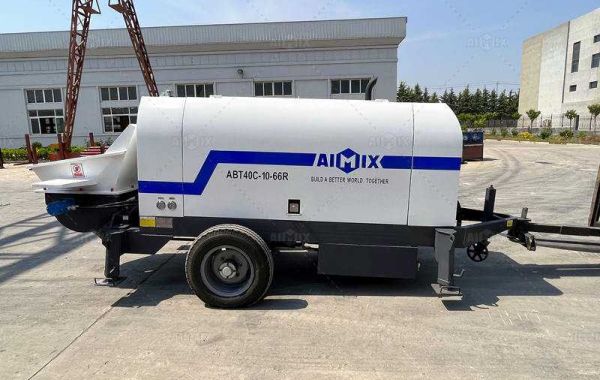A trailer concrete pump is an indispensable tool for modern construction projects, offering efficient and precise concrete placement for various applications. However, quick and proper installation is critical to ensure the pump's efficiency, safety, and longevity. This guide outlines essential tips and steps for the fast and successful setup of a trailer concrete pump.

Pre-Installation Preparation
Efficient installation begins with thorough preparation. Consider the following steps:
Site Assessment: Inspect the site for obstacles, uneven surfaces, and potential hazards. Identify a flat and stable area where the pump can be securely positioned. The site should allow easy access for both the pump and the delivery trucks.
Plan the Layout: Map out the positions of the pump, pipeline, and discharge points. This will ensure that the pipeline is properly aligned and minimizes unnecessary bends, which can reduce pumping efficiency.
Check Equipment Compatibility: Ensure the trailer concrete pump matches the project’s requirements in terms of pumping capacity, power source, and pipeline length. Verify that the pipeline diameter is appropriate for the type of concrete being used.
Safety Gear: Equip the team with safety gear, including gloves, helmets, and goggles, to prevent accidents during installation.
Ensure Stable Placement
The stability of the trailer concrete pump is paramount for safe and efficient operation:
Level the Ground: Use leveling tools to ensure the ground is even. If the site is on an incline, use wedges or stabilizers to secure the pump.
Deploy Outriggers: Extend and lock the pump’s outriggers to stabilize the equipment. Double-check that the outriggers are firmly placed and can support the pump's weight during operation.
Secure the Trailer: Use wheel chocks to prevent the pump from moving. This is particularly important on sloped surfaces or sites with loose soil.
Assemble the Pipeline Efficiently
Proper pipeline assembly is critical for quick and hassle-free installation:
Choose the Right Route: Select the shortest and most direct route to the discharge point. Avoid sharp bends and steep inclines, as these can increase resistance and reduce efficiency.
Inspect the Pipeline: Before connecting, inspect the pipeline sections for cracks, debris, or wear. Damaged sections should be replaced immediately.
Use Proper Connectors: Secure the connections between pipeline sections with appropriate clamps. Tighten the clamps to prevent leaks but avoid overtightening, which can damage the seals.
Anchor the Pipeline: Use straps or supports to anchor the pipeline along its route. This will prevent movement during pumping and reduce the risk of pipeline bursts.
Check the Power Supply
The power source is crucial for the smooth operation of the trailer concrete pump:
Verify Power Compatibility: For electric pumps, ensure that the site has a compatible power supply with the required voltage and amperage. For diesel pumps, check the fuel level and ensure there’s a reliable fuel supply nearby.
Test the Power System: Before starting the pump, test the power system to confirm it is functioning correctly. Inspect all cables, connectors, and switches for wear or damage.
Prime the Pump
Priming is an essential step to prepare the pump for operation:
Mix the Priming Material: Use a slurry made of cement and water or a commercial priming agent. This creates a lubricating layer inside the pipeline, reducing friction during pumping.
Fill the Hopper: Pour the priming material into the pump’s hopper and begin pumping slowly. Ensure the slurry covers the entire length of the pipeline before starting concrete delivery.
Conduct a Trial Run
Before beginning full-scale operations, perform a trial run to ensure everything is working correctly:
Start the Pump Slowly: Begin at a low pumping speed and gradually increase it while monitoring for irregularities such as leaks, vibrations, or unusual noises.
Check the Flow: Observe the flow of the material through the pipeline. Ensure there are no blockages or interruptions.
Adjust the System: If issues are identified, stop the pump immediately and address the problem. Double-check all connections, the stability of the setup, and the condition of the equipment.
Ensure Team Coordination
A well-coordinated team can significantly speed up the installation process:
Assign Roles: Clearly define roles and responsibilities for each team member, such as operating the pump, assembling the pipeline, or monitoring the concrete flow.
Communicate Effectively: Use clear signals or radios to maintain communication between team members, especially when working in large or noisy environments.
Provide Training: Ensure that all team members are familiar with the pump’s operation and safety protocols.
Follow Manufacturer Guidelines
Every trailer concrete pump is unique, and manufacturers provide specific guidelines for setup and operation:
Read the Manual: Familiarize yourself with the pump’s manual, paying special attention to installation, priming, and safety instructions.
Use Recommended Accessories: Stick to the manufacturer’s recommended accessories, such as pipelines and clamps, to avoid compatibility issues.
Schedule Regular Maintenance: Keep the pump in optimal condition by following the maintenance schedule outlined in the manual.
Prepare for Emergencies
Quick installation also involves planning for potential issues:
Have Spare Parts Ready: Keep a supply of spare parts, such as clamps, seals, and hoses, on-site to address unexpected problems.
Monitor Weather Conditions: Avoid installing the pump during extreme weather, as rain or strong winds can compromise stability and safety.
Establish a Safety Plan: Develop a plan to handle emergencies, such as pipeline bursts or pump malfunctions, to minimize downtime.
By following these tips, you can ensure the quick and effective installation of a trailer concrete pump, minimizing delays and maximizing efficiency. Proper preparation, stable placement, efficient pipeline assembly, and attention to detail will not only save time but also contribute to the long-term success of your construction projects.







